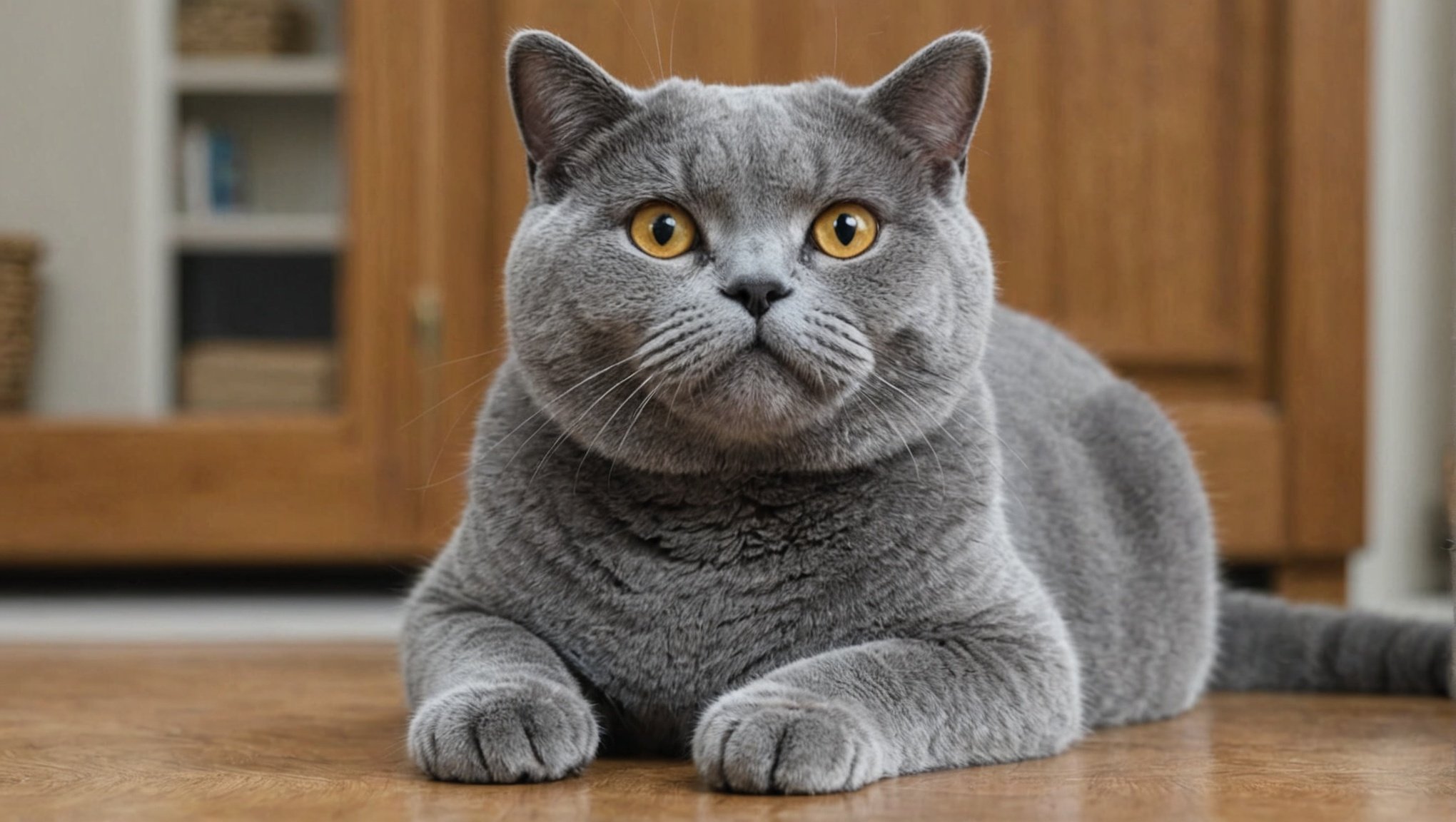Cats are notoriously independent creatures, known for their aloofness and self-reliance. Among the feline breeds, the British Shorthair is particularly renowned for its stately demeanour and plush double coat. The image of a British Shorthair performing tricks might seem out of place; after all, this is not a breed famous for its agility or obedience. However, with the right approach, you can indeed teach your British Shorthair a few fun tricks.
Understanding the British Shorthair Breed
Before you start training your British Shorthair, it’s imperative to understand the breed’s characteristics. This section will provide a brief overview of the breed, giving you a better idea of what to expect during the training process.
A découvrir également : What measures can you take to deter slugs without harming hedgehogs?
British Shorthairs are one of the most popular cat breeds in the world, and for a good reason. They’re gentle, easy-going, and incredibly low-maintenance. Their robust health, coupled with their adaptability, makes them the perfect pet for families and individuals alike.
However, British Shorthairs are also known to be a little stubborn. They’re not as active or playful as some other breeds, and they like to do things at their own pace. This trait doesn’t mean they’re incapable of learning new tricks – it just means you’ll need a little more patience and persistence.
Avez-vous vu cela : Can a Border Terrier’s diet influence the condition of its wiry coat?
Another important characteristic to note is their independence. British Shorthairs are not clingy or attention-seeking, and they appreciate having their own space. This trait means that they’re more likely to respond positively to training sessions that respect their boundaries and aren’t overly intrusive.
Starting the Training Process
Now that you’ve gained a better understanding of the British Shorthair breed, it’s time to start the training process. This section will guide you through the preliminary steps of training your cat, ensuring you’re fully prepared for the task ahead.
The first step in training your British Shorthair is to establish a positive association with the training process. This association can be achieved through careful use of rewards. Cats, unlike dogs, are not motivated by praise or affection. Instead, they respond to tangible incentives such as treats.
Start by choosing a high-quality, tasty treat that your cat loves. You can find a variety of cat treats on Amazon, many of which are specially formulated to be healthy and nutritious. Once you’ve chosen the perfect treat, use it to reward your cat during training sessions.
Remember, it’s important to only give the treat as a reward for the desired behavior. If you give it out too freely, your cat will become confused about what they’re being rewarded for.
Teaching Simple Tricks
With a basic understanding of the British Shorthair breed and a strong foundation of positive reinforcement, you’re now ready to start teaching your cat some simple tricks. This section will cover some easy-to-learn tricks that are perfect for beginners.
A good trick to start with is ‘sit’. Cats naturally sit when they’re relaxed and comfortable, so this trick is relatively easy to teach. To train your cat to sit on command, wait until they’re already sitting naturally. Then, say ‘sit’ in a clear, firm voice, and immediately give them a treat. Repeat this process over time, gradually introducing the command earlier until your cat associates the word ‘sit’ with the action.
Another trick you can teach your British Shorthair is ‘high five’. To do this, hold a treat in your hand and raise it slightly above your cat’s head. Most cats will naturally reach up to try and grab the treat. As soon as your cat raises their paw, say ‘high five’, give them the treat, and gently tap their paw.
Training Tips and Tricks
While the process of training your British Shorthair is relatively straightforward, there are some tips and tricks that can make the process easier. This section will share some advice to help you succeed in your training efforts.
Firstly, keep the training sessions short. Cats have a shorter attention span compared to dogs, and they can become easily distracted or bored. Aim for 5-10 minutes of training at a time, and try to conduct these sessions at least twice a day.
Secondly, always end the training sessions on a positive note. If your cat is struggling with a particular trick, don’t push them. Instead, switch to an easier trick that they’ve already mastered. This way, the training session still ends with a reward, reinforcing the positive association with training.
Finally, remember to be patient. Training a cat, especially a British Shorthair, can be a slow process. Don’t expect immediate results. Instead, celebrate the small victories, and remember that every step forward, no matter how small, is still progress.
In conclusion, while training your British Shorthair cat may require more patience and persistence than training a dog, it’s definitely possible. By understanding their breed characteristics, using positive reinforcement, teaching simple tricks, and employing helpful training tips, you can successfully teach your British Shorthair cat to perform a wide variety of tricks. Happy training!
Advanced Training Techniques for Your British Shorthair
Once your British Shorthair cat has mastered the basics, you might want to introduce some advanced techniques to their training repertoire. While these tricks might require more practice and patience, they will undoubtedly add an element of fun and excitement to your training sessions.
One of the advanced tricks you can teach your cat is the ‘fetch’. Yes, you heard it right. Cats, especially British Shorthairs, can learn to fetch, albeit a little differently than dogs. Start by choosing a toy that your cat likes. Toss the toy a short distance away and say ‘fetch’. Your cat might naturally chase the toy out of curiosity. If they do, reward them with a treat. If your cat picks up the toy with their mouth, reward them with a treat and lots of praises. Gradually increase the distance you throw the toy. Remember, this trick will take time, so be patient.
Another advanced trick you can try is ‘spin’. To teach your cat to spin, hold a treat above your cat’s head and slowly move your hand in the direction you want them to spin. Most cats will naturally follow the treat with their eyes and in the process, make a full turn. Once your cat completes a full turn, say ‘spin’ in a clear, firm voice, and immediately reward them with the treat. Over time, your cat will learn to associate the command with the action.
Final Thoughts: Revel in the Joy of Training Your British Shorthair
Training your British Shorthair to perform tricks can be a rewarding experience. Not only does it strengthen the bond between you and your pet, but it also keeps your cat mentally stimulated and physically active. However, remember that every cat is unique. Some cats might master the tricks quickly, while others might take some time.
Whether your cat becomes a trick expert or not, the most important thing is that you both enjoy the process. If you notice that your British Shorthair is getting stressed or frustrated, it’s best to stop the training and try again later. Know your cat’s limits, and never force them to do something they’re uncomfortable with.
In the end, the goal is to have fun and spend quality time with your lovable British Shorthair cat. Even if they don’t perform the trick perfectly, reward them for their effort and continued engagement. Remember, patience and positive reinforcement are key when it comes to cat training.
So, embark on this exciting journey of teaching your British Shorthair some cool tricks. With a bit of patience, persistence, and lots of love, you’ll soon realize that your cat is capable of much more than you ever imagined!











